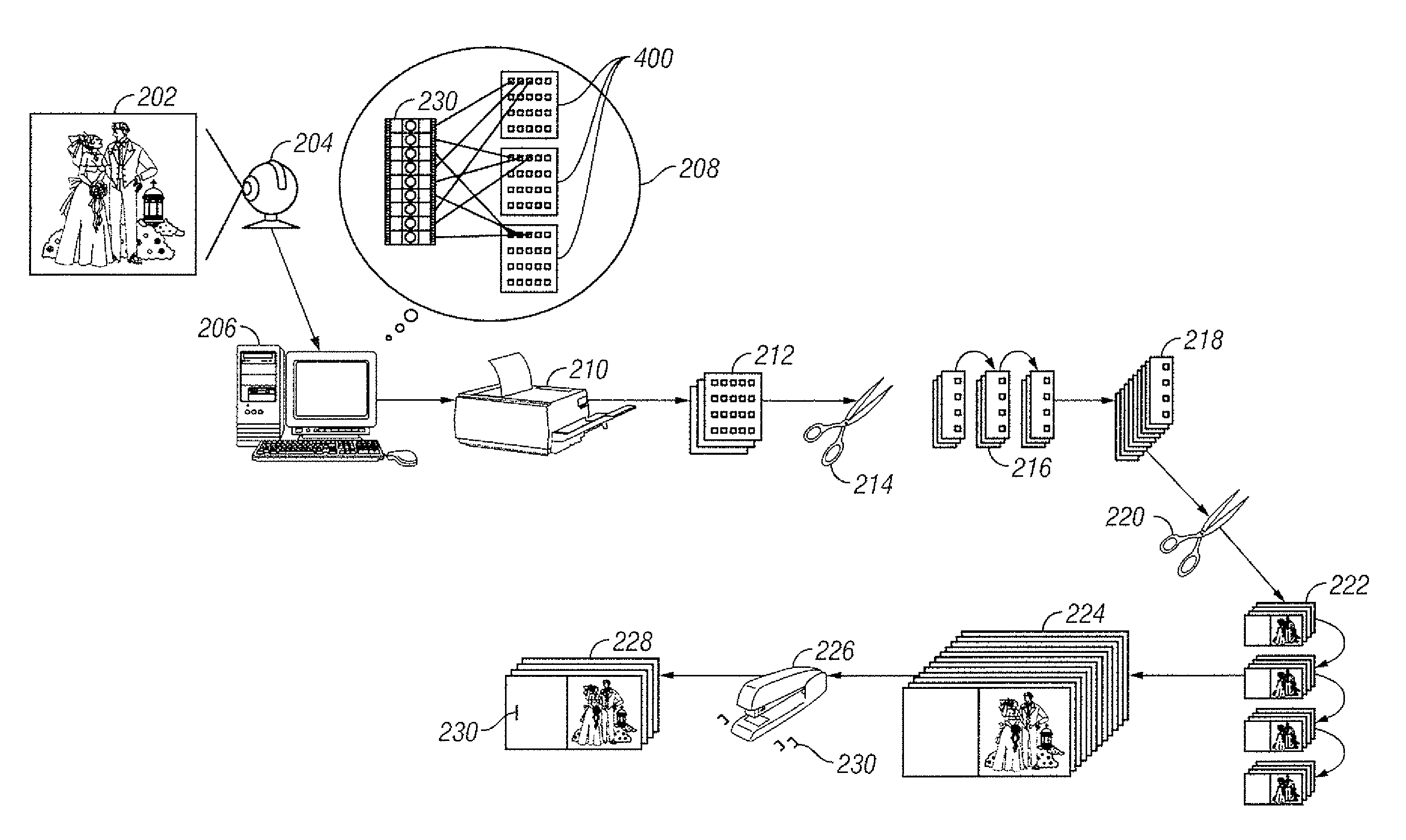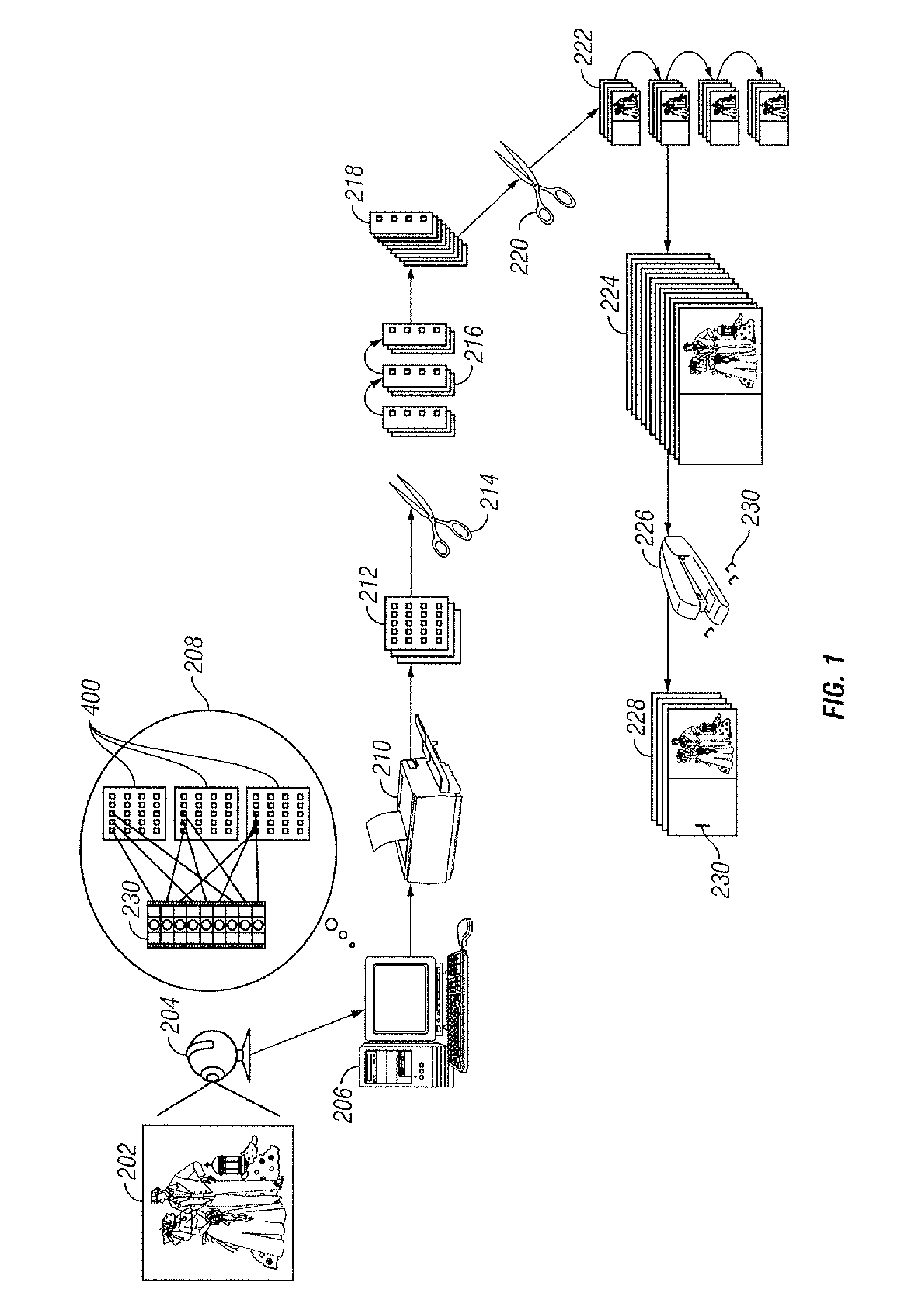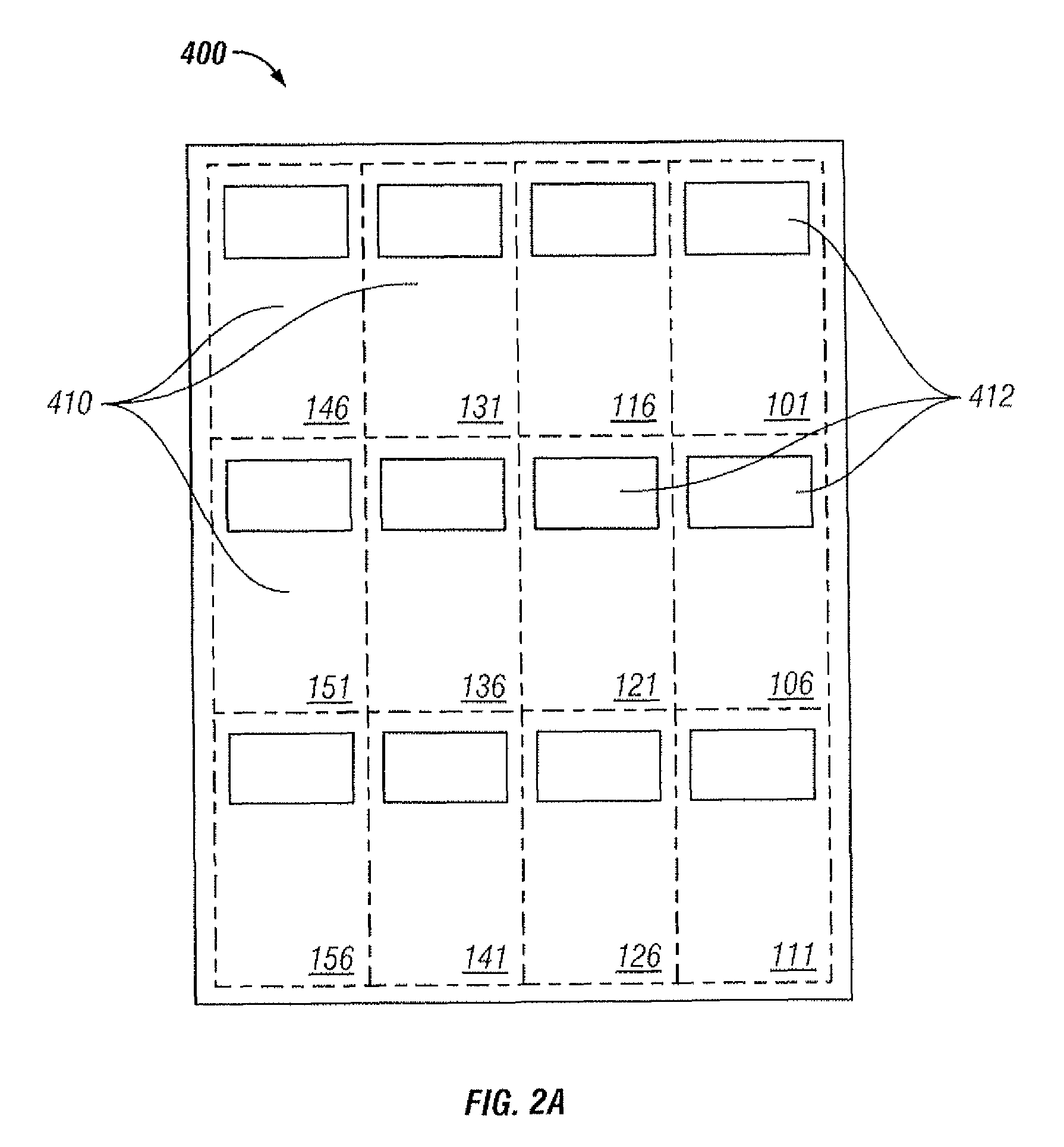Method of making an animated flipbook
a flipbook and flipbook technology, applied in the field of making flipbooks, can solve the problems of affecting the quality of flipbooks, and requiring specialized equipment and electricity, and achieve the effects of reducing production costs, reducing production costs, and reducing production costs
- Summary
- Abstract
- Description
- Claims
- Application Information
AI Technical Summary
Benefits of technology
Problems solved by technology
Method used
Image
Examples
Embodiment Construction
[0022]The present invention is directed towards a method for creating an animated book, or flipbook using standard, readily available equipment, a novel printing method and a novel cutting and stacking method. The term flipbook, as used herein, means a stack of at least two pages, bound at or near one edge of the stack, with each page containing one image. The images on each successive page of the flipbook are slightly altered from the previous image so as to simulate motion. The present invention contemplates using captured images from video footage over a time interval to reproduce the video footage. The present invention also contemplates using partially overlapping sections of one or more panoramic photographs for each flipbook image.
[0023]Referring initially to FIG. 1, therein is depicted a graphical overview of the present invention. First, the video camera 204 connected to a computer 206 records or captures video footage over a pre-determined time interval of a moving subject...
PUM
 Login to View More
Login to View More Abstract
Description
Claims
Application Information
 Login to View More
Login to View More - R&D
- Intellectual Property
- Life Sciences
- Materials
- Tech Scout
- Unparalleled Data Quality
- Higher Quality Content
- 60% Fewer Hallucinations
Browse by: Latest US Patents, China's latest patents, Technical Efficacy Thesaurus, Application Domain, Technology Topic, Popular Technical Reports.
© 2025 PatSnap. All rights reserved.Legal|Privacy policy|Modern Slavery Act Transparency Statement|Sitemap|About US| Contact US: help@patsnap.com



